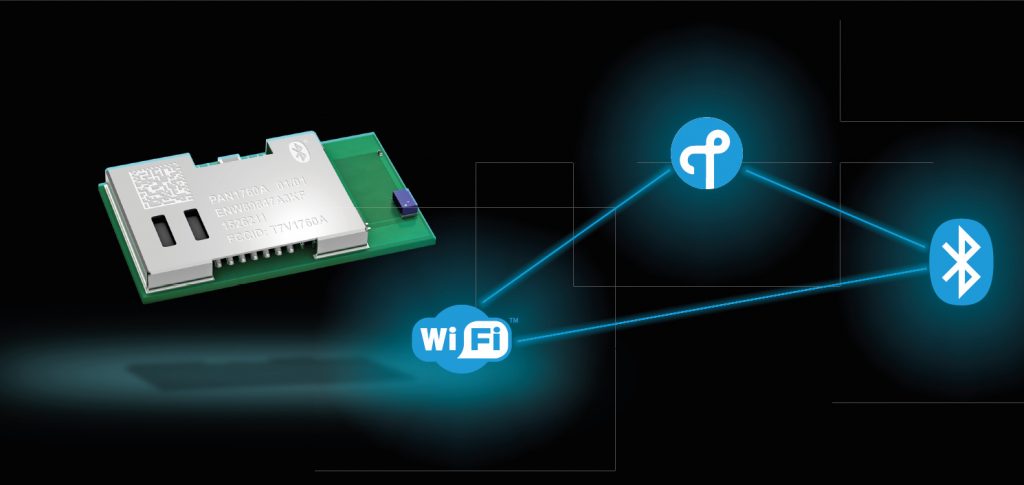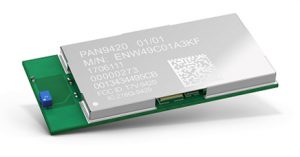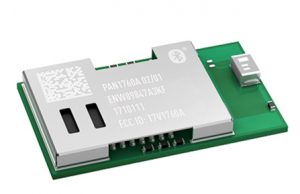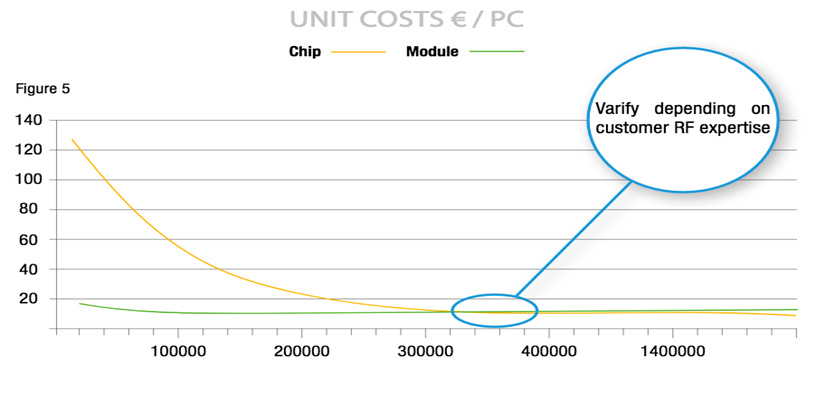Comment: IoT ubiquity depends on Wi-Fi and Bluetooth

The widespread reliance on networking in business as well as the growth of the Internet of Things and online services are strong testimonies to the benefits of shared data and resources.
The availability of simple-to-use, more secure, wireless solutions has created the opportunity to reduce costs, add features/added-value and improve performance. Smart, connected products are the future, and creation and execution of a well-developed plan can ensure your company makes a successful transition into this new world.
Providing wireless solutions< that support an IoT platform requires:
• Sufficient bandwidth, given a device’s physical constraints and environmental interference
• Long-life sensors and actuators that operate from limited power sources
• Consideration of size and weight constraints of a plethora of platforms
• Thorough understanding of cost, performance and sustainable business models
The development of IoT meshing enables embedded sensor technologies to communicate with IoT devices without PCs or dedicated hubs. This enables networks of connected things on a comparatively-inexpensive basis with small, locally-powered sensor nodes establishing links with nearby nodes, so that traffic hops between nodes located throughout the network.
In particular, two technologis are allowing meshingto achieve greater IoT ubiquity: Wi-Fi and Bluetooth.
Wi-Fi
Wi-Fi is based on the IEEE 802.11 standard. Fully integrated with the TCP/IP stack, Wi-Fi’s success is largely due to its interoperability, simplicity and affordability. Wi-Fi output power is sufficiently high for complete, in-home coverage, but can be subject to dead spots in large concrete structures, necessitating antennas.
While Wi-Fi and TCP/IP software is fairly large and complex, its use in laptops and smartphones with powerful MPUs and large amounts of memory is not problematic. Today, ICs and modules embed both the Wi-Fi software and the TCP/IP software inside the device itself. These new products eliminate most of the overhead from the MPU and enable wireless internet connectivity using only a tiny MCU.
Wi-Fi has historically been relatively-high power consumption, around 300 mA, compared to 3 mA for Bluetooth. Also idle power is important given that IoT devices actively communicate for a short time. When IoT devices run on batteries that cannot be charged regularly, Wi-Fi can be too power-hungry for use, however, silicon-based devices are now using advanced sleep protocols and fast on/off time, reducing power consumption dramatically.
 Panasonic’s fully-embedded, stand-alone 2.4GHz 802.11 b/g/n Wi-Fi module PAN9420 (right) has an integrated stack and API that minimizes firmware development and includes a full security suite. Featuring a fully shielded case, integrated oscillators and antenna, the module combines a high-performance CPU, high-sensitivity wireless radio, baseband processor, medium access controller, encryption unit, boot ROM with patching capability, internal SRAM and in-system programmable flash memory.
Panasonic’s fully-embedded, stand-alone 2.4GHz 802.11 b/g/n Wi-Fi module PAN9420 (right) has an integrated stack and API that minimizes firmware development and includes a full security suite. Featuring a fully shielded case, integrated oscillators and antenna, the module combines a high-performance CPU, high-sensitivity wireless radio, baseband processor, medium access controller, encryption unit, boot ROM with patching capability, internal SRAM and in-system programmable flash memory.
The integrated memory enables the storage of web content such as HTML pages or image data. The parallel support of access point and infrastructure mode allows easy setup.
Bluetooth 5
Bluetooth is used for short-range, low-power radio communication, eliminating the need for cables, yet the devices must be within approximately 30 meters of each other (BLE 4.2).
Bluetooth networks, or piconets, use a master/slave model. A single master can be connected to up to seven different slaves and any slave can connect to a single master. Bluetooth uses spread spectrum frequency hopping (SSFH) technology to limit interference when using multiple devices. Devices now operate at only 2 percent power duty-cycle, consuming approximately 50 nA while still remaining available for device discovery and connection setup.
The most recent iteration, Bluetooth 5 (Low Energy), provides a higher data rate, a data range of up to 1.000 m and rapid connection setup. Recent enhancements include:
• Twice the data rate
• Four times the range
• Eight times the broadcast capacity
• Higher available transmit power (to +20 dBm)
• Recent adoption of Bluetooth mesh 1.0, allowing a mesh network topology
 Panasonic’s new PAN1760A module benefits from a peak power consumption of only 3.3mA in Tx and Rx mode, enabling advanced wireless functionalities without compromising battery life. Mandatory and optional Bluetooth 4.2 features are supported while easy migration path to BT5.0 is secured.
Panasonic’s new PAN1760A module benefits from a peak power consumption of only 3.3mA in Tx and Rx mode, enabling advanced wireless functionalities without compromising battery life. Mandatory and optional Bluetooth 4.2 features are supported while easy migration path to BT5.0 is secured.
The small 15.6mm x 8.7mm x 1.9mm SMD module is based on Toshiba’s single chip TC35678 Bluetooth device with embedded Toshiba Bluetooth 4.2 LE stack and embedded flash. PAN1760A can be operated either in AT-Command or Host mode for very simple integration of Bluetooth connectivity into existing products, or in Stand-Alone mode.
In Stand-Alone mode, with 256 kB flash memory and 83 kB RAM for user application, the module can be used for many applications without the need for an external processor, saving cost, complexity, and space.
Modules or Wireless System-on-Chips (SoCs)
A modular approach is easier to implement, pre-certified and less resource intensive than using an SOC. Considerations when comparing the two include:
• Modules are self-contained, featuring an antenna and thus require less engineering.
• SoCs require extensive design, RF analysis, testing and revisions with specialized expensive equipment.
• Wireless products must pass stringent international tests. Modules are pre-qualified.
• A module is a single item. SoC-based designs require external components. Although the bill of materials cost for a SoC will be less, modules can leverage economies of scale can result in a substantial advantage.
In most cases, an SoC-based design can be cost optimized, size optimized and configured to the specific needs of the end product. Conversely, a module approach is likely to be easier to implement, pre-certified and ultimately require fewer resources.

Figure 1. Chip and module unit costs exceed the unit cost of each. Source: Panasonic
When considering time-to-market costs, one must not only look at direct costs, but include lost sales due to delayed market entrance and higher commercial risks due to a concentration on technical issues rather than core competencies.With the increasing quantity of wireless nodes, a modular approach is becoming increasingly popular, representing 32% of the overall low power wireless market, according to IHS. In order to meet varying customer expectations and needs, Panasonic Industry Europe complements its well-established range of ICs with wireless modules offering choice and a clear development path .
Pascal Meier has worked for over one year at Panasonic Industry Europe as a Product Manager for the Wireless department. Before that he worked at Audi and Bosch Engineering GmbH where he gained experience in development and project management.
